




What is a Network?
A network consists of multiple devices that communicate with each other. It can be as small as connecting two computers or as large as connecting billions of devices. While a traditional network consists of desktop computers, modern networks can include laptops, tablets, smartphones, televisions, game consoles, smart devices, and other electronics.
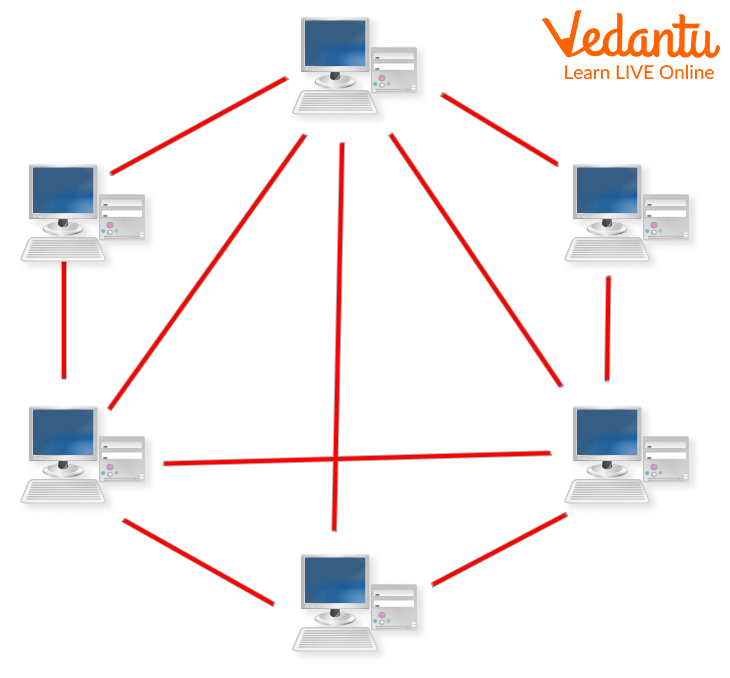
Computer Network
Relation Between Network And Internet
The Internet itself is a network because it allows information to be shared through computing devices. The Internet doesn't just connect computers in different cities but also connects computers across oceans and even space. On the other hand, in Antarctica and the Arctic, the internet reaches researchers via satellite connection.
It is easy to conclude that the Internet is a prime example of a WAN. After all, the letter "W" in the abbreviation "WAN" means the word "wide" and the Internet is clearly the widest of all networks!
Different Types of Networks
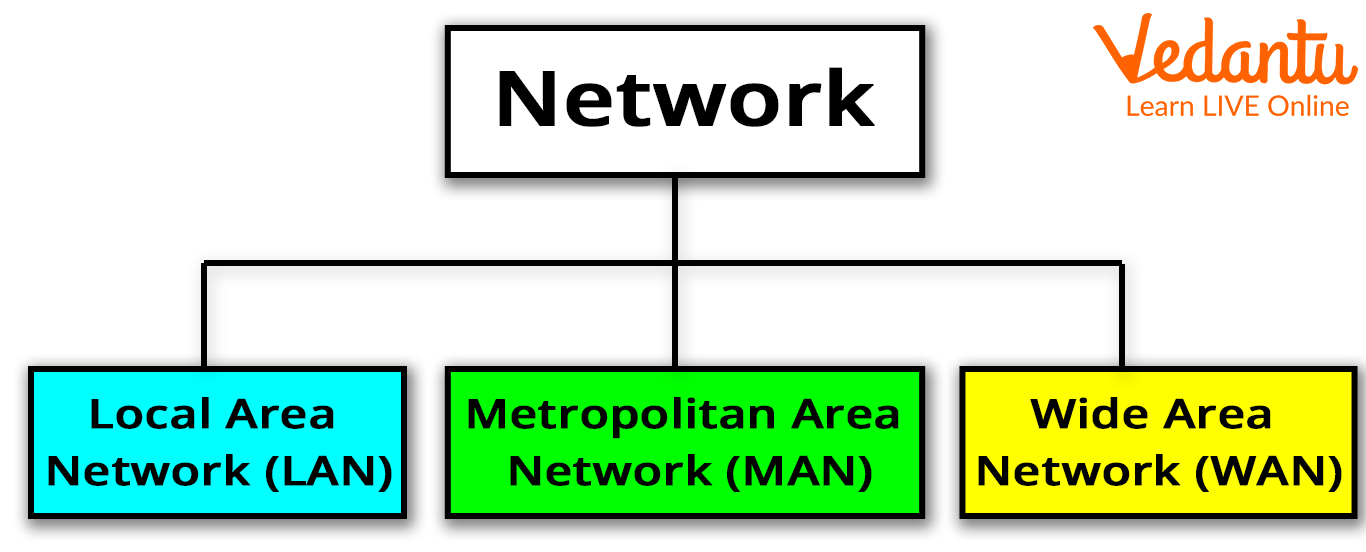
Types of Network
LAN (Local Area Network) - A local area network (LAN) is a group of computers and peripherals that are connected in a limited area, such as a school, laboratory, and office building. It is a globally used network, for sharing resources like files, printers, games, and other applications. The simplest type of LAN is connecting computers and printers in someone's home or office.
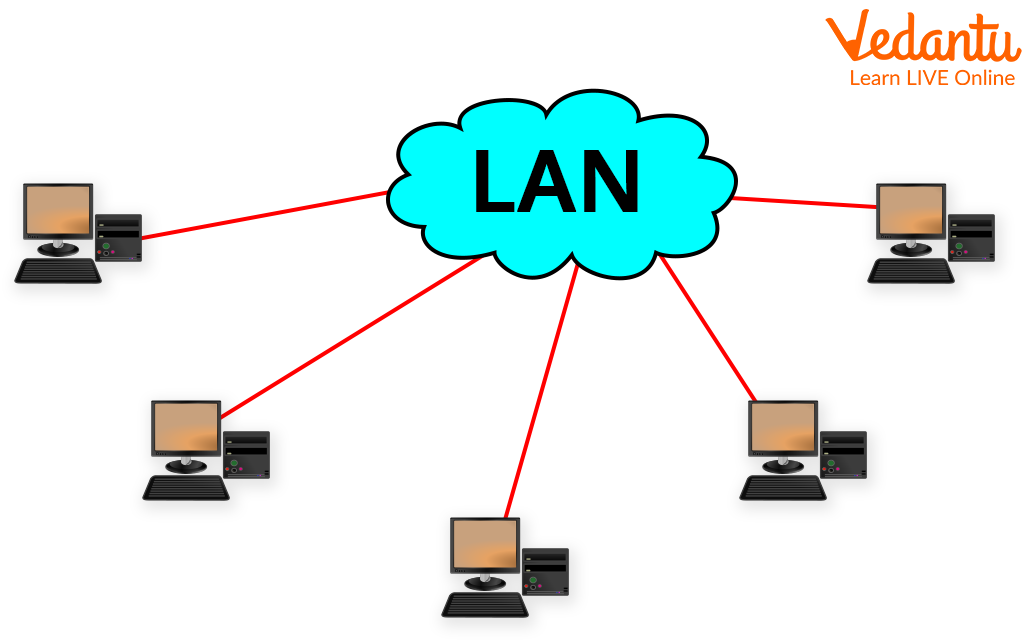
LAN (Local Area Network)
WAN (Wide Area Network) - WAN (Wide Area Network) is another important computer network that spans large geographical areas. A WAN network system can be a LAN connection that connects to other LANs using telephone lines and radio waves. It is mostly limited to a business or organisation.
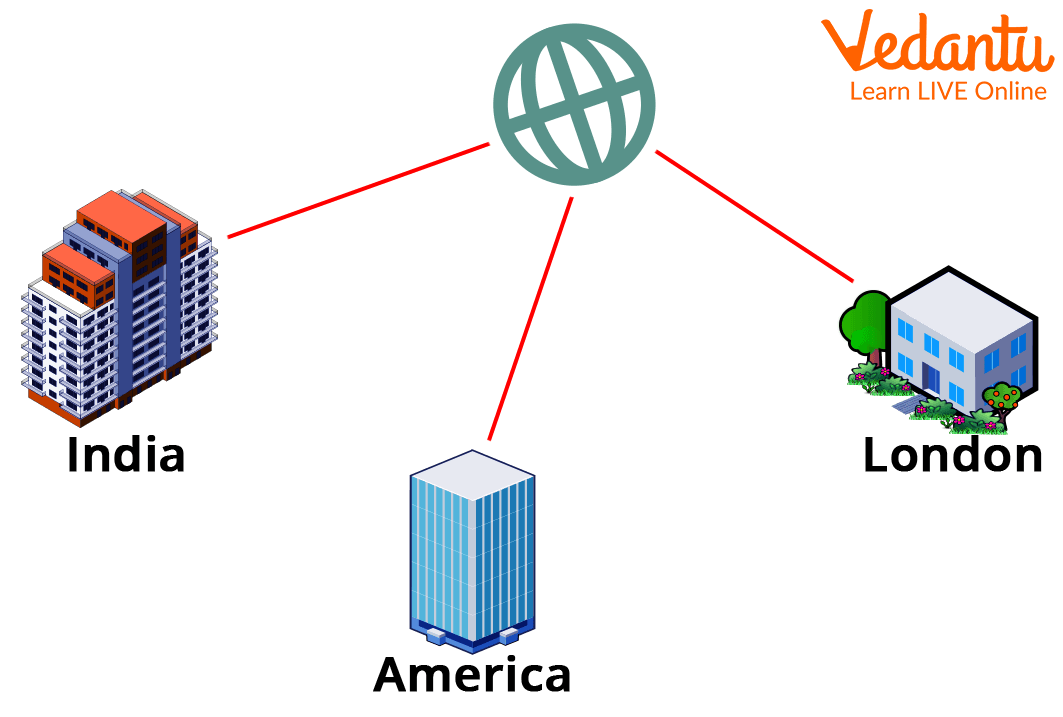
WAN (Wide Area Network)
MAN (Metropolitan Area Network) - A Metropolitan Area Network, or MAN, consists of a computer network across an entire city, university campus, or small region. This type of network is larger than a LAN, which is usually limited to a single building or location. The range of this type of network is from a few miles to tens of miles.
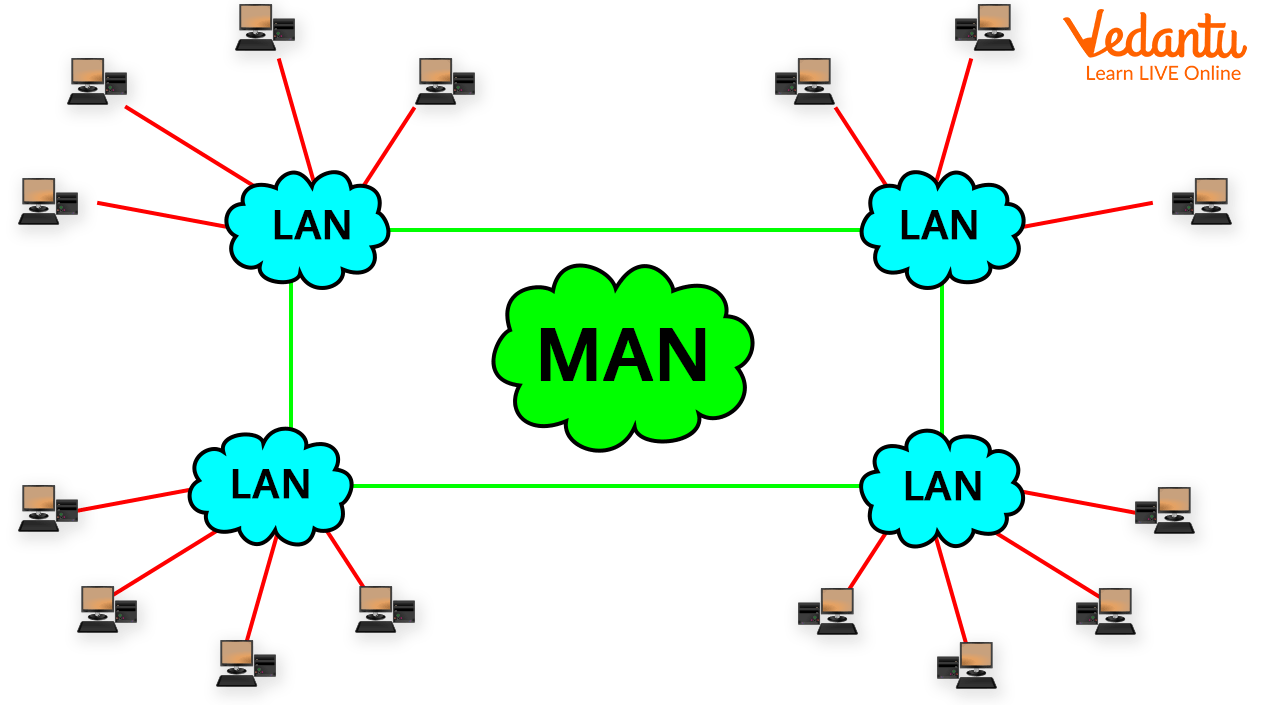
MAN (Metropolitan Area Network)
Terminology Related to Network
Search Engine: Software that searches web pages for specific information.
E-mail or Electronic Mail: One of the most used methods of communication or exchange of messages on the Internet.
Chat: Real-time text communication between two users via computers.
Video Conferencing: A service on the Internet that allows people in two or more locations to interact and communicate with each other through the transmission of audio and video.
Blog: A website or part of a website that contains personal journal-type entries in reverse chronological order.
E-commerce: The buying and selling of goods and services through electronic systems such as the Internet or other networks.
E-learning: The use of technology to enable people to learn anytime, anywhere.
Advantages and Disadvantages of Client Network
Client/Server Network - In client-server network relationships, some computers act as servers and others act as clients. A server is simply a computer that provides network resources and provides services to other computers when they request it. A client is a computer running a program that requests a service from the server.
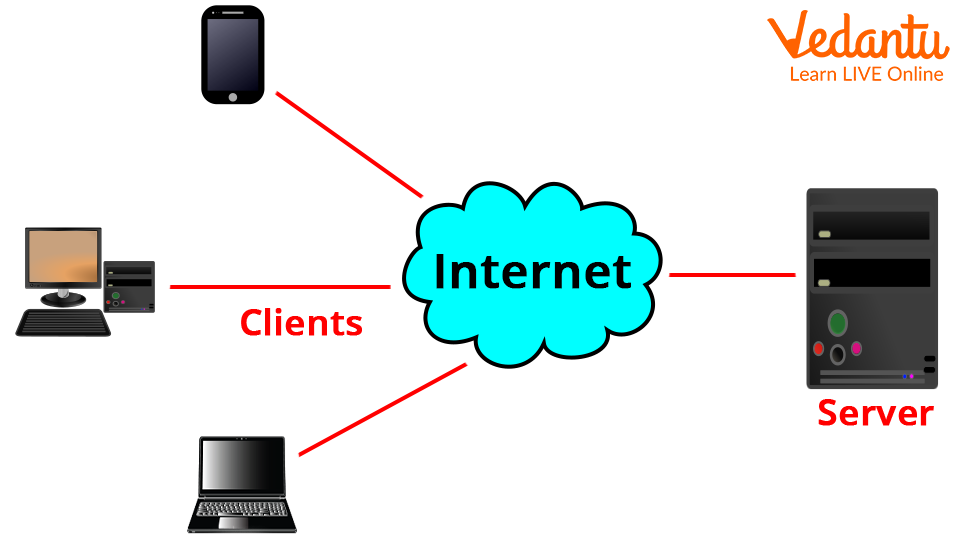
Client/Server Network
Advantages:
It is very safe.
It gives better performance.
It has centralised backup.
Disadvantages:
It requires professional administration.
It is more demanding on hardware and software.
It requires expensive specialised software.
Points to Remember
A global system of interconnected computers using a standardised set of Internet protocols to communicate and share information is called the Internet.
Three types of networks are MAN, LAN, and WAN.
A client-server network is one in which all available network resources, such as files, directories, applications, and shared devices, are centrally managed and hosted and then accessed by the client.
A local area network (LAN) is based on a client-server network relationship.
Summary
A network connects multiple devices so that they communicate with each other. LAN, WAN, and MAN are its types. The Internet is also an example of a network. Client network is a special type used for work in offices or any other working place.
Learning by Doing
Choose the correct option.
Q1. The Internet is an example of which network?
WAN
LAN
MAN
CAN
Q2. For your home, you will choose which network?
WAN
LAN
MAN
CAN
Sample Questions
Q1. Write the advantages and disadvantages of LAN networks.
Ans: Advantages
Computer resources such as hard drives, DVD-ROMs, and printers can share local area networks. This significantly reduces the cost of purchasing a new computer.
You can use the same software on the network instead of buying new licensed software for each client on that network.
The data of all network users can be stored on a single hard disk of the server computer.
Disadvantages
LANs do save costs by sharing computing resources, but the initial cost of setting up local area networks is quite high.
The LAN administrator can check the personal information files of each LAN user, so it does not offer good privacy.
A local area network requires constant LAN management as there are issues related to software setup and hardware failure.
Q2. Write the advantages and disadvantages of WAN networks.
Ans: Advantages
A WAN helps you cover a larger geographical area. Business offices located at greater distances can thus communicate easily.
It includes devices like mobile phones, laptops, tablets, computers, game consoles, etc.
A WLAN connection works using radio transmitters and receivers built into client devices.
Disadvantages
The initial investment cost of setting up is very high.
It is difficult to maintain a WAN network. You need experienced technicians and network administrators.
It offers less security compared to other types of computer networks.
Q3. Write the advantages and disadvantages of the MAN network.
Ans: Advantages
It offers fast communication using high-speed media such as optical cables.
It provides excellent support for a large network and better access to WAN networks.
The dual bus in the MAN network provides support for data transmission in both directions simultaneously.
Disadvantages
More cables are needed to establish a MAN connection.
In the MAN network, it is difficult to secure the system against hackers.
FAQs on Networking and Internet
1. What is the basic concept of a computer network?
The basic concept of a computer network involves connecting two or more computing devices, such as computers, smartphones, or servers, to share resources and exchange information. These resources can include files, printers, internet connections, or software applications. The primary goal is to enable seamless communication and collaboration between connected devices.
2. How are the Internet and a computer network related?
The Internet is the largest and most well-known example of a computer network. Think of a 'computer network' as a general term for any collection of connected devices, while the Internet is a specific, global system of interconnected computer networks that uses the standard Internet Protocol Suite (TCP/IP). Essentially, the Internet is a network of networks, making it a WAN (Wide Area Network) of global proportions.
3. What are the main types of computer networks with examples?
The main types of computer networks are categorized by their geographical scope. The three primary types as per the CBSE syllabus are:
- LAN (Local Area Network): Covers a small, limited area like a single office, school building, or home. It's used for sharing local resources like printers and files.
- MAN (Metropolitan Area Network): Spans a larger area than a LAN, such as an entire city or a large university campus. It often connects multiple LANs.
- WAN (Wide Area Network): Covers a broad geographical area, such as a state, country, or the entire globe. It connects multiple LANs and MANs. The Internet is the prime example of a WAN.
4. How do I choose the right type of network (LAN, WAN, or MAN) for a specific need, like a school versus a city-wide service?
Choosing the right network depends on the scale and purpose. For a school or a single office building, a LAN is ideal because it efficiently connects devices in a small geographical area for resource sharing. For a city-wide service, like connecting municipal offices or traffic control systems across a city, a MAN is the correct choice. To connect business branches in different cities or countries, a WAN is required to facilitate long-distance communication and data transfer.
5. What is the key difference between the Internet and the World Wide Web (WWW)?
This is a common point of confusion. The key difference is that the Internet is the infrastructure, while the World Wide Web is a service on that infrastructure. The Internet is the global network of physical cables, routers, and servers that allows devices to connect. The World Wide Web, or 'the web', is a system of interlinked web pages and documents that you access using the Internet via a web browser. The Internet also supports other services like email (SMTP) and file transfers (FTP).
6. What is an IP address and why is it important for networking?
An IP (Internet Protocol) address is a unique numerical label assigned to every device connected to a computer network that uses the Internet Protocol for communication. Its importance is twofold: it provides host or network interface identification and location addressing. Think of it as the mailing address for your computer; without it, data packets wouldn't know where to go, and your device couldn't send or receive information on the network.
7. How does a client-server network model work, and what are its main advantages for a business?
In a client-server model, network tasks are divided between servers and clients. A central, powerful computer called a server hosts, manages, and provides resources and services. Other computers, known as clients, request these services from the server. For a business, this model offers significant advantages:
- Centralised Management: All data and resources are stored and managed in one place, making updates and security easier.
- Enhanced Security: Access rights and policies can be centrally controlled from the server.
- Scalability: It's easy to add new clients to the network without disrupting existing services.
- Reliable Backups: Data can be backed up centrally from the server, protecting all client information.
8. What is a web browser and what role does it play in accessing the internet?
A web browser (like Google Chrome, Mozilla Firefox, or Microsoft Edge) is a software application used to access and display information on the World Wide Web. Its primary role is to act as an interpreter. When you enter a web address, the browser sends a request to a web server, retrieves the web page's files (written in languages like HTML and CSS), and then renders them into the formatted, interactive page you see on your screen. It is your primary tool for navigating the web.
9. Can the Internet exist without the World Wide Web?
Yes, absolutely. The Internet is the fundamental hardware and protocol infrastructure that allows networks to connect. It existed before the World Wide Web was created. The Internet supports many applications, and the WWW is just one of them. Other critical services that run on the Internet include email (using SMTP), file transfer (FTP), and online gaming, all of which can function independently of the World Wide Web.





















